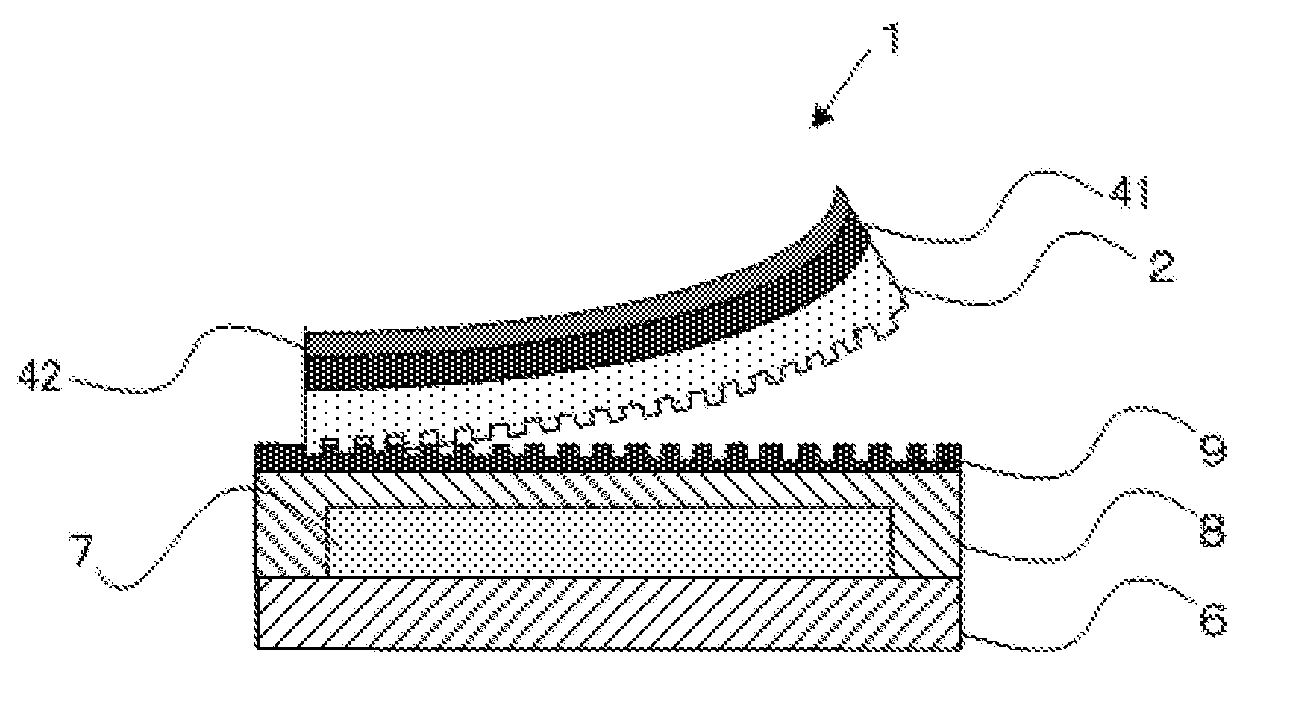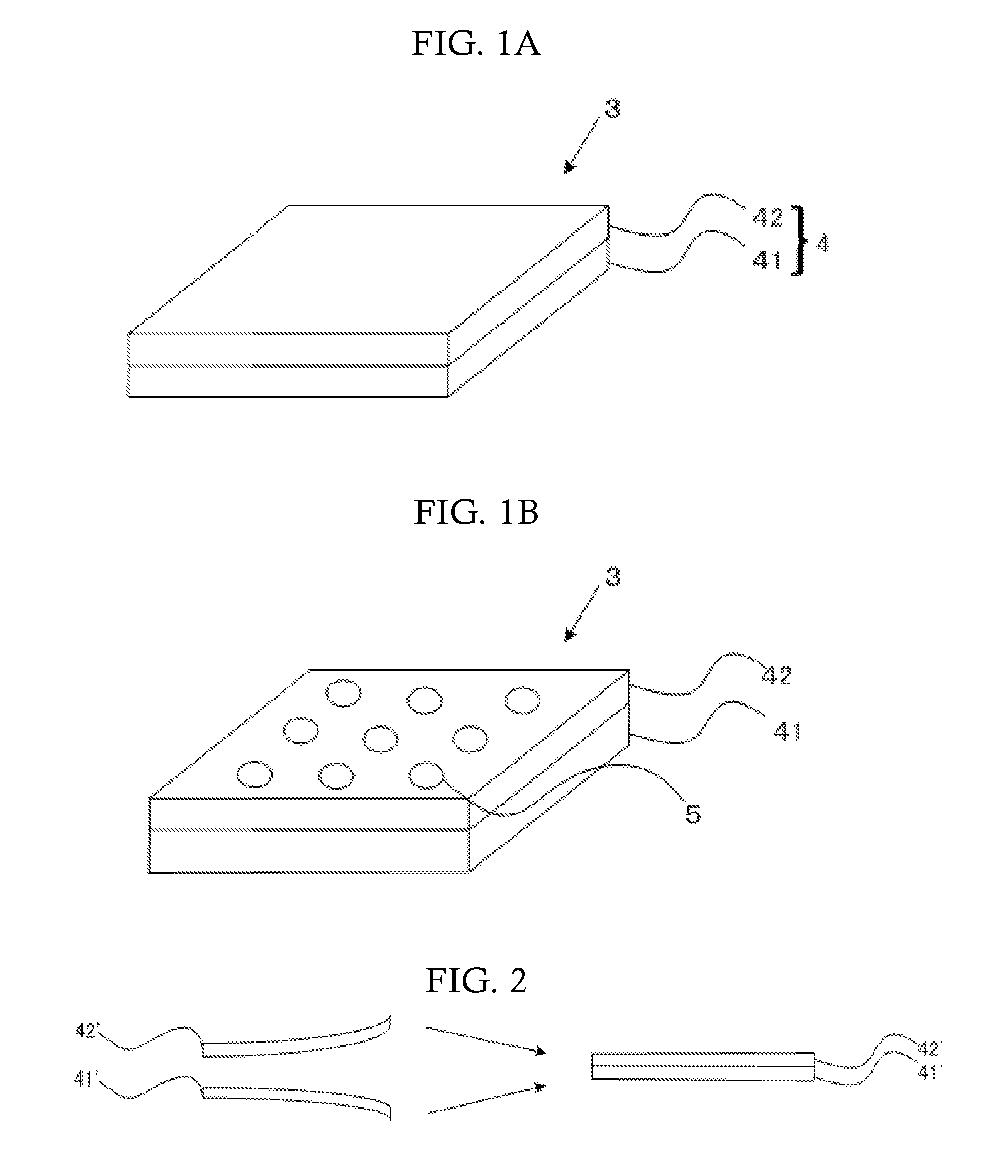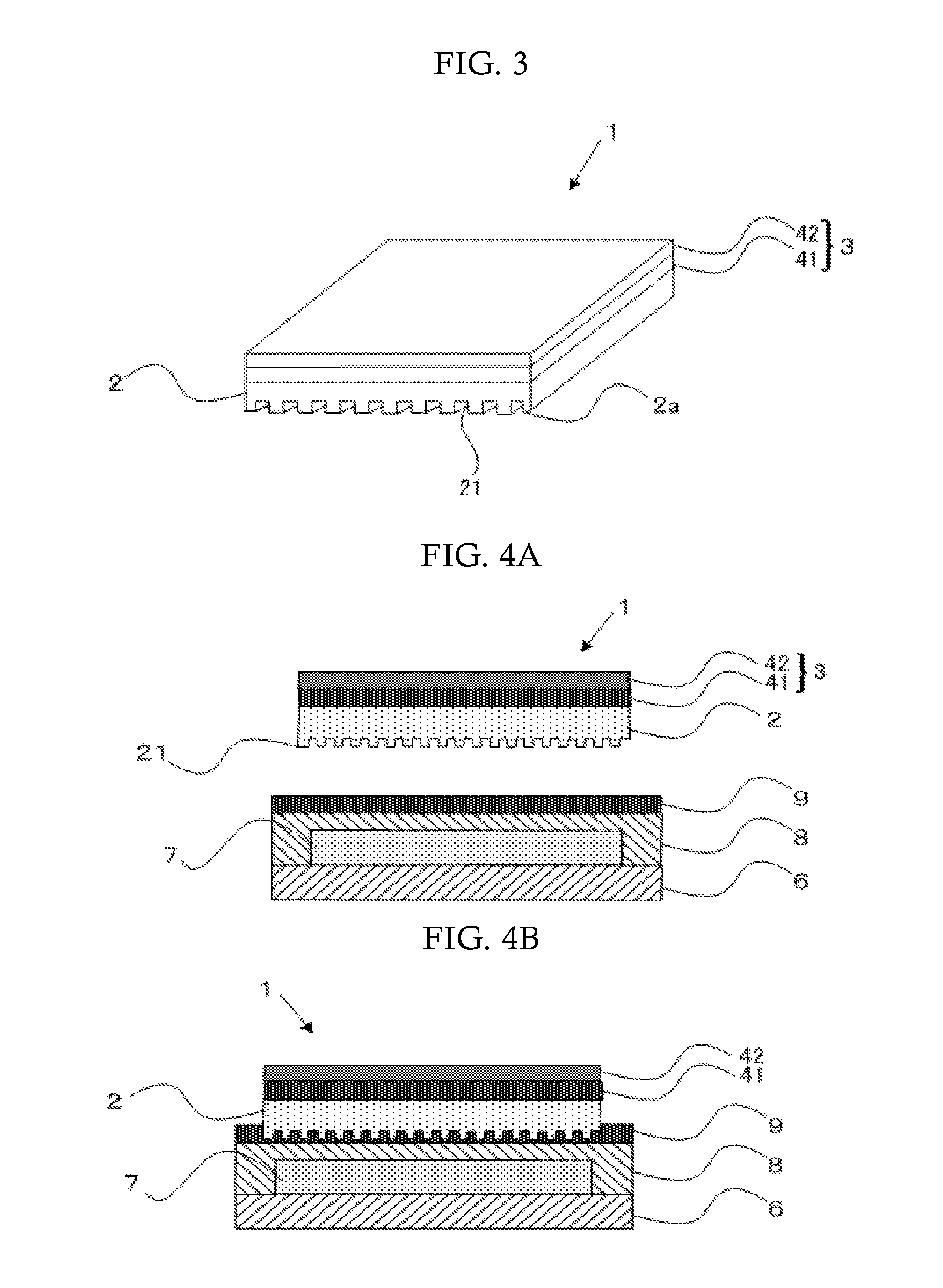Release plate for use in imprinting method, mold structure and imprinting method
a technology of release plate and imprinting method, which is applied in the field of release plate for use in the imprinting method, mold structure and imprinting method, can solve the problems of glass breaking, mold damage, resist layer or mold damage, etc., and achieve the effect of reducing stress and reducing damag
- Summary
- Abstract
- Description
- Claims
- Application Information
AI Technical Summary
Benefits of technology
Problems solved by technology
Method used
Image
Examples
example 1
[0121]The mold including the release plate was pressed against the resist layer of the organic EL element, the resist layer was thermally cured at 80° C., then the whole surface of the release plate was heated at 100° C. so as to curve the release plate, and the resist layer and the mold were thus separated from each other. This process was repeated 100 times, and the number of times part of the resist layer stuck to the is mold instead of being separated therefrom, and the resist layer or the mold was damaged was measured. The results are shown in Table 1.
example 2
[0122]The separating process was repeated 100 times in the same manner as in Example 1 except that a release plate having through holes was used and a resist layer containing a UV-curable epoxy resin was cured by applying ultraviolet rays to the resist layer via the through holes. The number of times part of the resist layer stuck to the mold instead of being separated therefrom, and the resist layer or the mold was damaged was measured. The results are shown in Table 1.
example 3
[0123]The separating process was repeated 100 times in the same manner as in Example 1 except that a resist layer containing a UV-curable epoxy resin was formed on a transparent glass substrate and cured by applying ultraviolet rays to the resist layer via the transparent glass substrate. The number of times part of the resist layer stuck to the mold instead of being separated therefrom, and the resist layer or the mold was damaged was measured. The results are shown in Table 1.
PUM
| Property | Measurement | Unit |
|---|---|---|
| thickness | aaaaa | aaaaa |
| thickness | aaaaa | aaaaa |
| thickness | aaaaa | aaaaa |
Abstract
Description
Claims
Application Information
 Login to View More
Login to View More - R&D
- Intellectual Property
- Life Sciences
- Materials
- Tech Scout
- Unparalleled Data Quality
- Higher Quality Content
- 60% Fewer Hallucinations
Browse by: Latest US Patents, China's latest patents, Technical Efficacy Thesaurus, Application Domain, Technology Topic, Popular Technical Reports.
© 2025 PatSnap. All rights reserved.Legal|Privacy policy|Modern Slavery Act Transparency Statement|Sitemap|About US| Contact US: help@patsnap.com



